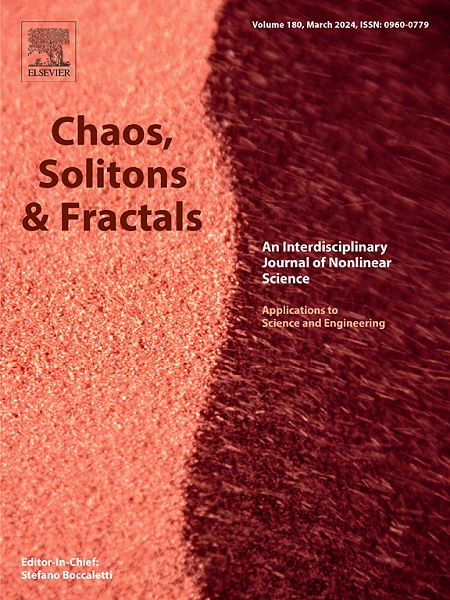Stochastic FitzHugh–Nagumo neuron model with Gamma distributed delay kernel
IF 5.3
1区 数学
Q1 MATHEMATICS, INTERDISCIPLINARY APPLICATIONS
引用次数: 0
Abstract
The FitzHugh–Nagumo (FHN) model is an efficient and biologically plausible model for simulating neuronal dynamics. However, it lacks any inherent capability to appropriately integrate memory effects. In this study, a non-Markov stochastic neuron model is formulated as an extension of the FHN model by incorporating Gamma distributed delay kernel as the form of memory in a recovery variable. Additionally, we propose an enhanced framework to incorporate neuronal noise into this model, further improving its ability to describe the propagation of action potential spikes along axons. We simulate the action potential signals recorded from the rat cortex by employing the modified version of the FHN model. This is done by constructing the input impulse signal from the recorded action potential data based on the time and quality of the action potential. This impulse signal is fed as input in the modified FHN model resulting in the replication of firing patterns of rat cortex, effectively replicate the action potential signals along with incorporating the inherent noise present in the recordings. This demonstrates the ability of the modified FHN model to accurately capture the dynamics of neuronal activity.

具有分布延迟核的随机FitzHugh-Nagumo神经元模型
FitzHugh-Nagumo (FHN)模型是一种有效的、生物学上合理的模拟神经元动力学的模型。然而,它缺乏任何固有的能力来适当地整合记忆效应。在本研究中,通过在恢复变量中加入Gamma分布延迟核作为记忆形式,建立了非马尔可夫随机神经元模型作为FHN模型的扩展。此外,我们提出了一个增强的框架,将神经元噪声纳入该模型,进一步提高其描述动作电位沿轴突传播的能力。我们采用改进的FHN模型模拟大鼠皮层记录的动作电位信号。这是通过根据动作电位的时间和质量从记录的动作电位数据中构造输入脉冲信号来实现的。该脉冲信号作为输入输入到改进的FHN模型中,从而复制了大鼠皮层的放电模式,有效地复制了动作电位信号,同时结合了记录中存在的固有噪声。这证明了改进的FHN模型能够准确地捕捉神经元活动的动态。
本文章由计算机程序翻译,如有差异,请以英文原文为准。
求助全文
约1分钟内获得全文
求助全文
来源期刊

Chaos Solitons & Fractals
物理-数学跨学科应用
CiteScore
13.20
自引率
10.30%
发文量
1087
审稿时长
9 months
期刊介绍:
Chaos, Solitons & Fractals strives to establish itself as a premier journal in the interdisciplinary realm of Nonlinear Science, Non-equilibrium, and Complex Phenomena. It welcomes submissions covering a broad spectrum of topics within this field, including dynamics, non-equilibrium processes in physics, chemistry, and geophysics, complex matter and networks, mathematical models, computational biology, applications to quantum and mesoscopic phenomena, fluctuations and random processes, self-organization, and social phenomena.
 求助内容:
求助内容: 应助结果提醒方式:
应助结果提醒方式:


